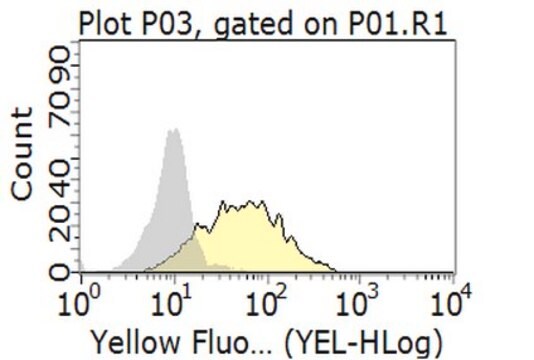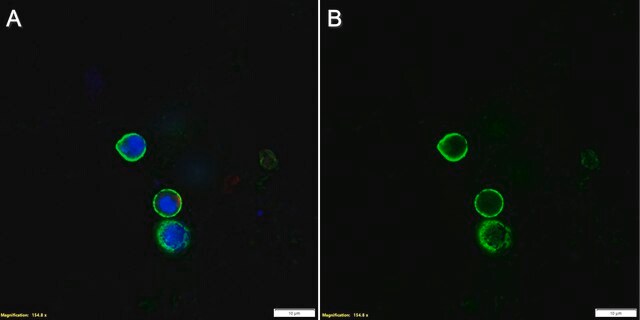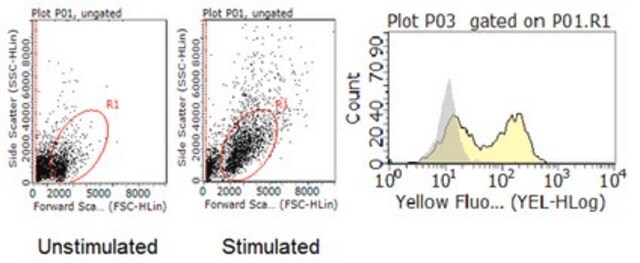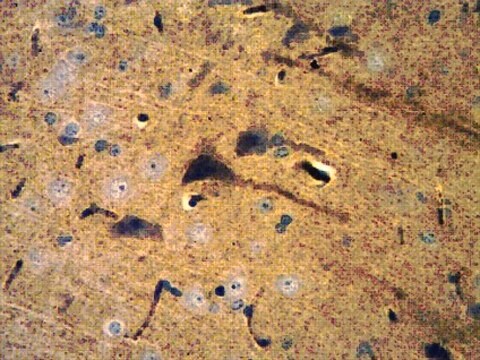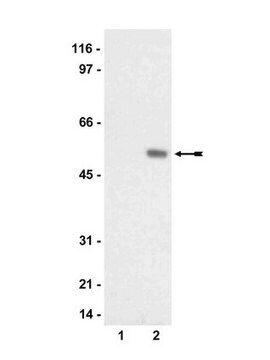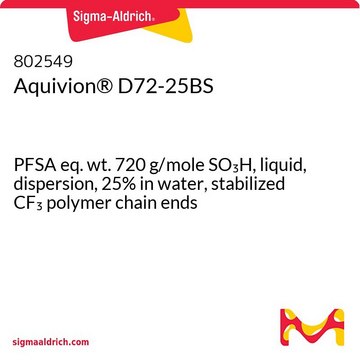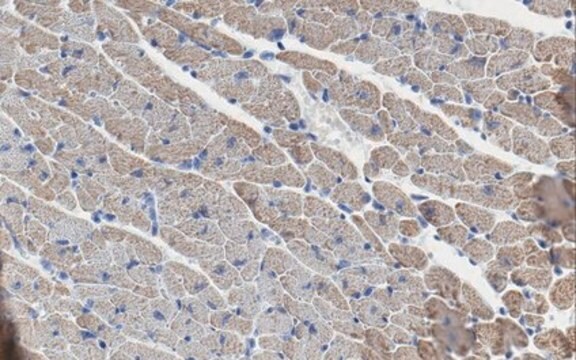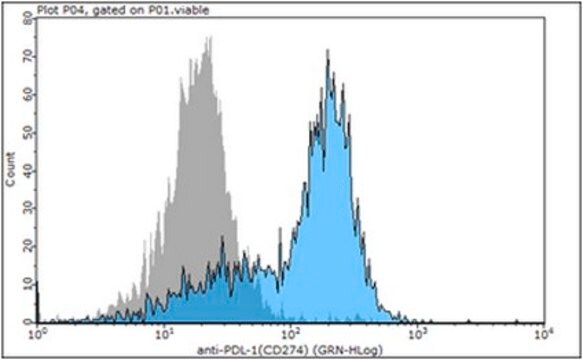MABF846
Anti-LAG3 Antibody, clone C9B7W (Azide Free)
Synonim(y):
LAG3|Lymphocyte activation gene 3 protein|LAG-3|CD223
Zaloguj sięWyświetlanie cen organizacyjnych i kontraktowych
About This Item
Kod UNSPSC:
12352203
eCl@ss:
32160702
NACRES:
NA.41
Polecane produkty
pochodzenie biologiczne
rat
Poziom jakości
klon
monoclonal
reaktywność gatunkowa
mouse
metody
activity assay: suitable
flow cytometry: suitable
Opis ogólny
Lymphocyte-activation gene 3 (LAG3), also known as cluster of differentiation 223 (CD223), is an immunoglobulin superfamily (IgSF) type I membrane protein encoded by the LAG3 gene in human. LAG3 is expressed in human activated T and NK cells and involved lymphocyte activation by functioning as a ligand for major histocompatibility complex (MHC) class II molecules.
Immunogen
Recombinant protein corresponding to within the extracellular D2 domain of mouse LAG3.
Zastosowanie
Anti-LAG3 Antibody, clone C9B7W (Azide Free) is an antibody against LAG3 for use in Flow Cytometry, Activity Assay.
Flow Cytometry Analysis: A representative lot detected LAG3 in TILs from B16 and MC38 mice (Woo, S., et al. (2011). Cancer Research. 72(4):917-927).
Flow Cytometry Analysis: A representative lot detected LAG3 in activated T cells from CD223-/- and CD2
Flow Cytometry Analysis: A representative lot detected LAG3 in activated T cells from CD223-/- and CD2
Jakość
Evaluated by Flow Cytometry in Staph enterotoxin B treated mouse splenocyte.
Flow Cytometry Analysis: 1.0 ug of this antibody detected LAG3 in Staph enterotoxin B treated mouse splenocyte.
Flow Cytometry Analysis: 1.0 ug of this antibody detected LAG3 in Staph enterotoxin B treated mouse splenocyte.
Inne uwagi
Unless otherwise stated in our catalog or other company documentation accompanying the product(s), our products are intended for research use only and are not to be used for any other purpose, which includes but is not limited to, unauthorized commercial
Ta strona może zawierać tekst przetłumaczony maszynowo.
Certyfikaty analizy (CoA)
Poszukaj Certyfikaty analizy (CoA), wpisując numer partii/serii produktów. Numery serii i partii można znaleźć na etykiecie produktu po słowach „seria” lub „partia”.
Masz już ten produkt?
Dokumenty związane z niedawno zakupionymi produktami zostały zamieszczone w Bibliotece dokumentów.
Nasz zespół naukowców ma doświadczenie we wszystkich obszarach badań, w tym w naukach przyrodniczych, materiałoznawstwie, syntezie chemicznej, chromatografii, analityce i wielu innych dziedzinach.
Skontaktuj się z zespołem ds. pomocy technicznej